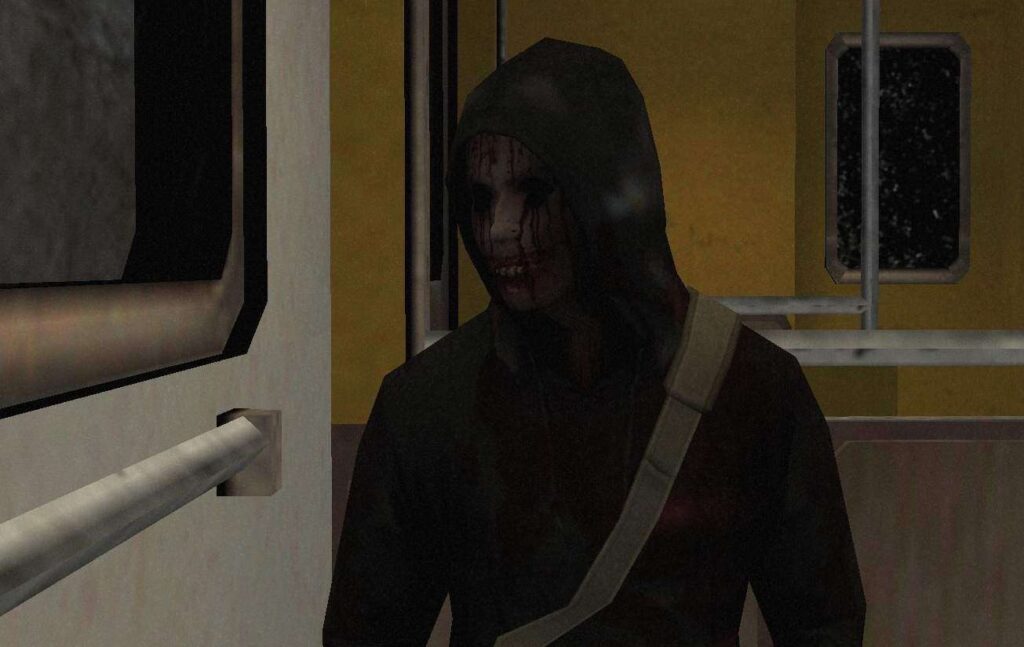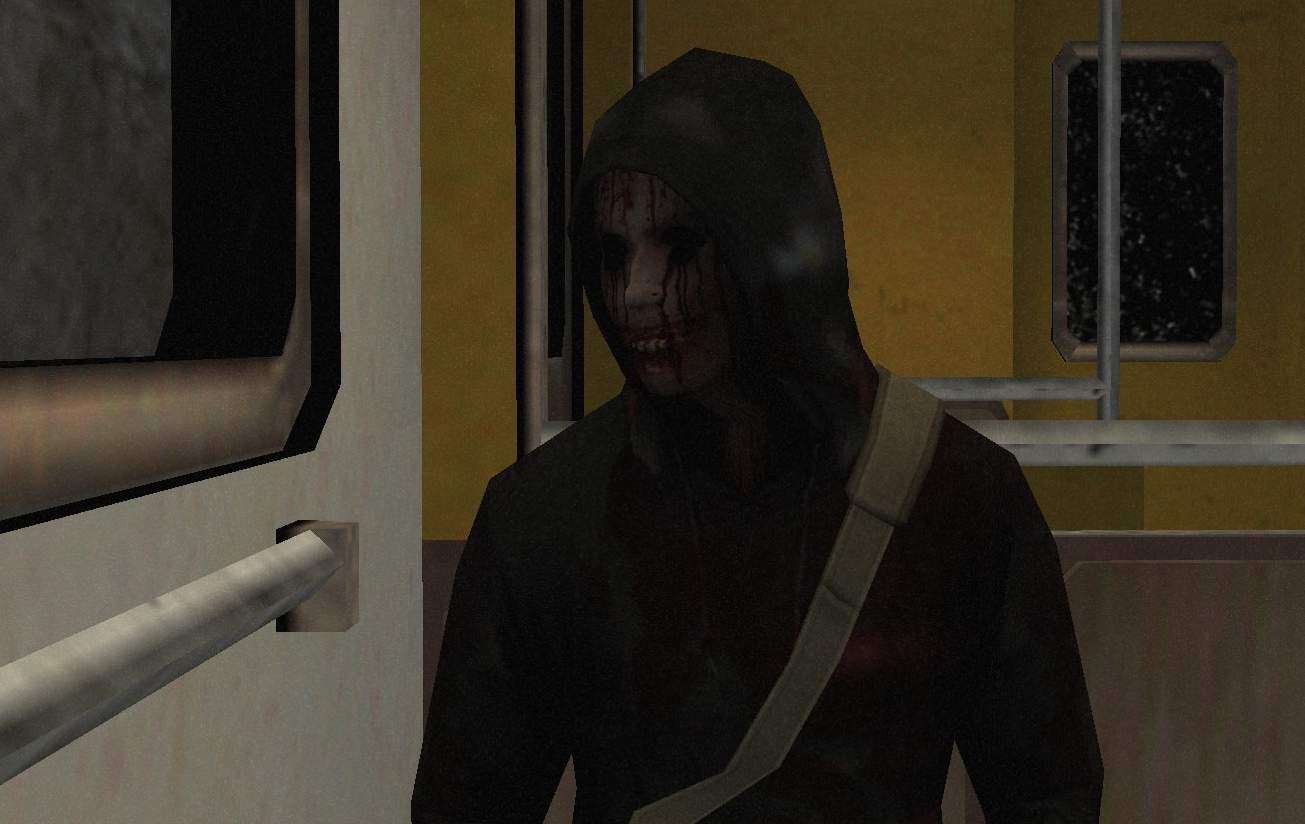
The Silent Screams of Simon Henriksson: Understanding the Cry of Fear Protagonist
Cry of Fear, a psychological horror game developed by Team Psykskallar, plunges players into the nightmarish world of Simon Henriksson, a troubled teenager navigating the terrifying streets of a deserted city. The game’s protagonist, Simon, is not simply a vessel for the player; he’s a deeply flawed and complex character whose journey is central to the game’s unsettling narrative and lasting impact. Understanding Simon Henriksson, his motivations, and his tragic fate is crucial to fully appreciating the chilling experience that Cry of Fear offers. This article delves into the psyche of Simon, exploring his past, his struggles, and the horrors that ultimately define him.
Simon’s Backstory: A Glimpse into a Troubled Past
Simon’s backstory is deliberately fragmented, revealed gradually through flashbacks and environmental storytelling. We learn that he suffers from depression and social anxiety, feelings exacerbated by a traumatic incident involving a car accident. This accident, depicted in harrowing detail, leaves Simon physically disabled and emotionally scarred. The physical limitations imposed by his injury become a metaphor for his internal struggles, hindering his ability to cope with the horrors that unfold. The game subtly hints at other underlying issues, suggesting a history of bullying and feelings of isolation, further contributing to his fragile mental state. This carefully crafted backstory lays the foundation for Simon’s vulnerability and susceptibility to the nightmarish events that follow. Understanding his past is key to interpreting his actions and the distorted reality he experiences throughout the game. The character of the Cry of Fear protagonist is very complex.
The Descent into Madness: Exploring Simon’s Psychological State
As the game progresses, Simon’s mental state deteriorates rapidly. The horrors he encounters – grotesque monsters, disturbing visions, and psychological manipulation – push him to the brink of sanity. It becomes increasingly difficult to distinguish between reality and hallucination, blurring the lines between Simon’s internal struggles and the external threats he faces. The game masterfully uses visual and auditory cues to reflect Simon’s declining mental health, creating a sense of unease and disorientation for the player. The unreliable narrator aspect of Simon’s perspective adds another layer of complexity, forcing players to question the validity of what they are witnessing. Is Simon truly battling external forces, or is he simply succumbing to the demons within his own mind? This ambiguity is a hallmark of psychological horror, and Cry of Fear utilizes it to great effect, making the player an active participant in unraveling Simon’s fractured psyche. The Cry of Fear protagonist is in a state of constant torment.
Key Relationships: Unveiling Simon’s Connections
Simon’s relationships with other characters, particularly Sophie and Purnell, play a significant role in shaping his journey and ultimately influencing his fate. Sophie, his apparent love interest, represents a glimmer of hope and connection in Simon’s otherwise bleak existence. However, their relationship is fraught with complications, and Sophie’s role in the narrative is shrouded in ambiguity. Purnell, on the other hand, serves as a source of support and guidance, offering Simon a lifeline amidst the chaos. However, even Purnell’s motivations are questionable, and his influence on Simon’s decisions is not always positive. These complex relationships highlight Simon’s vulnerability and his desperate need for connection, making his eventual isolation all the more tragic. Understanding the dynamics of these relationships is crucial to understanding Simon’s motivations and the choices he makes throughout the game. What is the story of the Cry of Fear protagonist without understanding these relationships?
Thematic Resonance: Exploring Themes of Isolation, Depression, and Trauma
Cry of Fear delves into profound themes of isolation, depression, and trauma, making it a deeply unsettling and thought-provoking experience. Simon’s journey is a reflection of the struggles faced by individuals battling mental illness, highlighting the devastating impact of isolation and the importance of seeking help. The game’s unflinching portrayal of these themes is what sets it apart from many other horror games, elevating it beyond mere jump scares and monster encounters. The psychological horror elements are not simply window dressing; they are integral to the narrative and serve to amplify the game’s message. By exploring these difficult themes with sensitivity and nuance, Cry of Fear offers a powerful commentary on the human condition and the challenges of navigating a world that can often feel isolating and overwhelming. The themes explored through the Cry of Fear protagonist are very significant.
Simon’s Actions: Analyzing the Protagonist’s Choices
Throughout Cry of Fear, Simon is faced with a series of difficult choices, each with its own consequences. These choices not only affect the gameplay but also shed light on Simon’s character and his internal struggles. Some choices are seemingly insignificant, while others have a profound impact on the narrative and ultimately determine Simon’s fate. Analyzing these choices allows players to gain a deeper understanding of Simon’s motivations and the factors that influence his decisions. Does he act out of desperation, fear, or a genuine desire to do good? Does he succumb to his inner demons, or does he manage to find a glimmer of hope amidst the darkness? By examining Simon’s actions, players can gain a more nuanced understanding of his character and the complexities of his psychological state. The Cry of Fear protagonist is always struggling with his choices.
The Ending(s): Interpreting Simon’s Fate
Cry of Fear features multiple endings, each offering a different interpretation of Simon’s fate. These endings are not simply arbitrary variations; they are carefully crafted conclusions that reflect the choices made throughout the game and the player’s understanding of Simon’s character. Some endings offer a glimmer of hope, suggesting that Simon may find a path to recovery, while others depict a more tragic outcome, highlighting the devastating consequences of mental illness. The ambiguity of the endings is intentional, forcing players to confront the difficult questions raised by the game and to draw their own conclusions about Simon’s journey. Regardless of the specific ending, Cry of Fear leaves a lasting impression, prompting players to reflect on the themes of isolation, depression, and trauma long after the credits have rolled. Understanding the ending is important to understand the Cry of Fear protagonist.
The Legacy of Simon Henriksson: Why He Remains a Compelling Character
Simon Henriksson is not your typical video game protagonist. He is flawed, vulnerable, and deeply troubled, making him a relatable and compelling character despite the extreme circumstances he faces. His journey is a harrowing exploration of mental illness, trauma, and the struggle for survival in a world that often feels hostile and unforgiving. Cry of Fear‘s success lies in its ability to create a truly immersive and unsettling experience, largely due to the depth and complexity of its protagonist. Simon’s story resonates with players because it touches upon universal themes of isolation, fear, and the search for meaning in a chaotic world. He is a reminder of the importance of empathy, understanding, and the need to address mental health issues with sensitivity and compassion. The Cry of Fear protagonist is a character that stays with you long after you finish the game.
The Impact on Psychological Horror: Simon’s Contribution to the Genre
Cry of Fear significantly impacted the psychological horror genre, demonstrating the power of video games to explore complex and sensitive themes. Simon Henriksson’s portrayal as a deeply flawed and vulnerable protagonist challenged the traditional hero archetype, paving the way for more nuanced and realistic characters in horror games. The game’s focus on psychological horror, rather than relying solely on jump scares and gore, created a more unsettling and thought-provoking experience for players. Cry of Fear also popularized the use of environmental storytelling and unreliable narration, techniques that have become increasingly common in the genre. By pushing the boundaries of what a horror game could be, Cry of Fear helped to elevate the genre and demonstrate its potential for exploring profound and meaningful themes. The Cry of Fear protagonist helped to revolutionize the genre.
Analyzing Simon’s Design: Visual and Auditory Cues
The design of Simon Henriksson, both visually and auditorily, plays a crucial role in conveying his character and his psychological state. His physical appearance, marked by his disability and his increasingly disheveled state, reflects his internal struggles and his deteriorating mental health. The game’s sound design, particularly the use of distorted sounds and unsettling music, further enhances the sense of unease and disorientation that Simon experiences. The visual and auditory cues work together to create a truly immersive and disturbing experience, drawing the player deeper into Simon’s nightmarish world. The attention to detail in Simon’s design is a testament to the developers’ commitment to creating a realistic and believable portrayal of mental illness. The Cry of Fear protagonist‘s design is very intentional.
How to Empathize with Simon: Understanding His Perspective
While Simon’s actions may sometimes be difficult to understand or condone, it is important to approach his character with empathy and understanding. He is a product of his circumstances, a victim of trauma and mental illness struggling to survive in a world that often feels hostile and unforgiving. By attempting to understand his perspective, his motivations, and his fears, players can gain a deeper appreciation for the complexities of his character and the challenges he faces. Empathy is key to unlocking the true meaning of Cry of Fear and to appreciating the game’s powerful message about mental health awareness. It is also important to remember that the Cry of Fear protagonist is a fictional character.
The Future of Characters Like Simon: Mental Health Representation in Games
Simon Henriksson’s legacy extends beyond Cry of Fear, paving the way for more nuanced and realistic portrayals of mental health in video games. As the industry continues to evolve, it is important to prioritize accurate and sensitive representation of mental illness, avoiding harmful stereotypes and promoting empathy and understanding. Characters like Simon can serve as a valuable tool for raising awareness about mental health issues and for encouraging players to seek help if they are struggling. By continuing to create complex and relatable characters who grapple with mental illness, video games can play a positive role in destigmatizing these issues and promoting a more compassionate and understanding society. The Cry of Fear protagonist set a new standard for mental health representation.
In conclusion, Simon Henriksson, the Cry of Fear protagonist, is a complex and compelling character whose journey is central to the game’s unsettling narrative and lasting impact. His story is a powerful exploration of mental illness, trauma, and the struggle for survival, making Cry of Fear a truly unforgettable experience. Understanding Simon, his motivations, and his tragic fate is crucial to fully appreciating the chilling and thought-provoking message that the game conveys. The Cry of Fear protagonist will continue to be studied for years to come. The Cry of Fear protagonist is an important figure in video game history. The Cry of Fear protagonist embodies the struggles of mental illness. The Cry of Fear protagonist deserves to be understood. The Cry of Fear protagonist is a symbol of psychological horror. The Cry of Fear protagonist is well-developed. The game excels in crafting the Cry of Fear protagonist. The Cry of Fear protagonist is memorable. The Cry of Fear protagonist is a victim. The Cry of Fear protagonist is a survivor.
[See also: Psychological Horror Games]
[See also: Games with Complex Protagonists]
[See also: Indie Horror Games]

